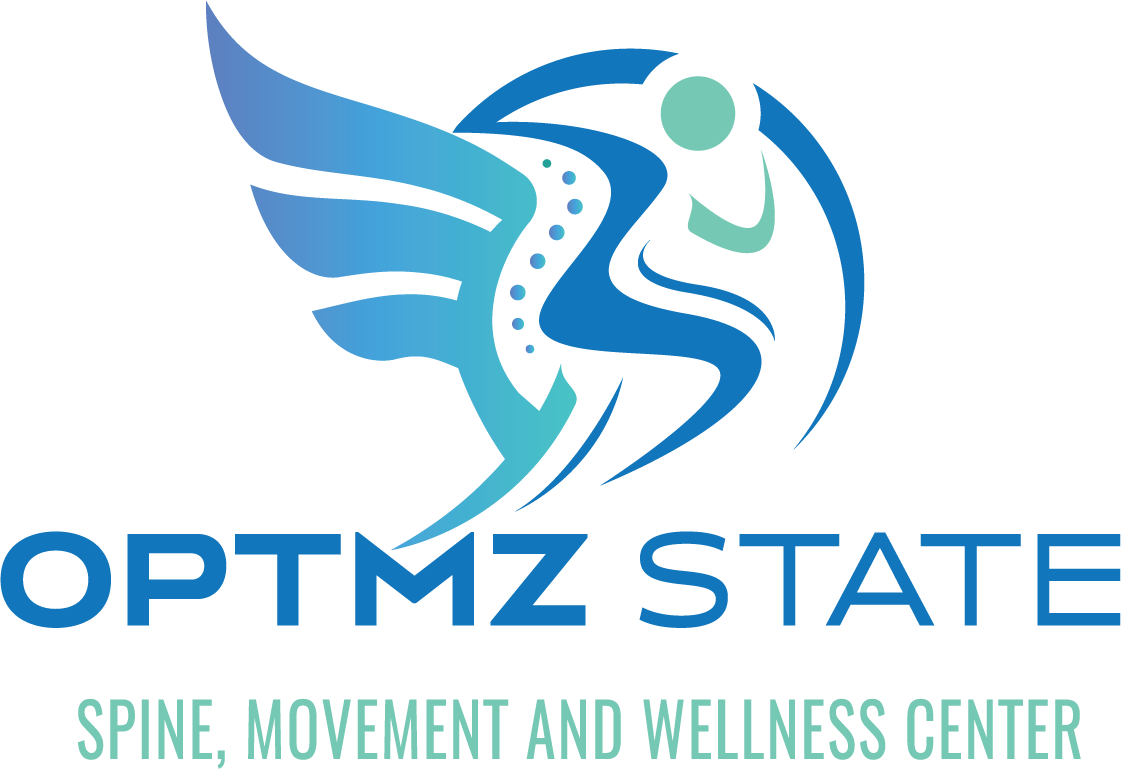You've probably noticed that mobility isn't just about flexibility; it's a balance of strength, awareness, and intentional movement. Tracy's approach to better mobility challenges you to rethink how you engage with your body and incorporate mindful practices into your routine. By embracing movement as an art form, you might discover techniques that not only enhance your physical capabilities but also deepen your connection with yourself. What if you could release a level of freedom in your movements that you never thought possible? The key lies in understanding a few essential concepts.
Understanding Mobility and Flexibility
Mobility and flexibility are essential components of physical health that often get confused but play distinct roles in your movement capabilities. Understanding these differences can enhance your physical performance and overall well-being.
Mobility refers to your ability to move freely and easily through various joints and muscles. It's about how well you can perform movements, like squatting or reaching, without restriction. When you have good mobility, you can execute daily activities with ease, whether it's picking up groceries or playing a sport.
Flexibility, on the other hand, deals specifically with the lengthening of muscles and tendons. It's your muscles' ability to stretch and lengthen, allowing for a greater range of motion. While flexibility is an important aspect of mobility, improving flexibility alone won't necessarily enhance your overall movement capabilities. In fact, a person can be flexible but lack the strength or stability needed for effective movement.
To truly improve your mobility, focus on dynamic movements that engage multiple muscle groups and joints. Incorporating exercises like lunges, squats, and rotational movements can greatly boost your mobility.
Regularly practicing these movements not only enhances your range of motion but also strengthens the muscles around your joints.
Tracy's Philosophy on Movement
Tracy believes movement is an art that combines strength, flexibility, and awareness. She emphasizes that every action you take should stem from a deep understanding of your body and its needs. When you move, you're not just going through the motions; you're engaging in a dialogue with your body. This connection allows you to discover what feels right and what doesn't.
Central to Tracy's philosophy is the idea that movement should be fluid, not forced. She encourages you to listen to your body and respect its limits. You shouldn't push through pain or discomfort, as this can lead to injury and hinder your progress. Instead, focus on gradual improvements, celebrating each small victory along the way.
Tracy also highlights the significance of variety in your movement practices. She believes that mixing different forms of movement—be it yoga, dance, or strength training—keeps your body engaged and responsive. This diversity not only enhances your physical abilities but also keeps your mind active and curious.
Moreover, awareness plays a crucial role in Tracy's approach. She urges you to cultivate mindfulness during your movements. By being present, you can better understand how your body feels and responds, allowing you to make adjustments that promote ideal mobility.
Ultimately, Tracy's philosophy is about embracing movement as a lifelong journey, where each step—no matter how small—leads to greater freedom and energy in your life.
Essential Exercises for Better Mobility
Improving your movement capabilities involves incorporating specific exercises that enhance flexibility, strength, and awareness.
Start with dynamic stretches like leg swings and arm circles. These movements prepare your body for activity by increasing blood flow and loosening tight muscles. Aim for 10–15 repetitions on each side to get the most benefit.
Next, focus on strength-building exercises. Bodyweight squats and lunges work wonders for your lower body, promoting both strength and stability. Perform three sets of 10–15 reps, ensuring you maintain proper form throughout.
Incorporate planks to strengthen your core, holding each plank for 20–30 seconds, gradually increasing the duration as you progress.
Don't forget about mobility drills. Try the hip opener stretch, where you kneel on one knee while pushing your hips forward. Hold this position for 20–30 seconds before switching sides. This not only enhances hip flexibility but also improves your overall range of motion.
Another significant exercise is the thoracic spine rotation. Sit or stand tall, place your hands behind your head, and rotate your upper body side to side. This helps maintain spinal mobility, which is vital for many daily activities.
Lastly, finish your routine with static stretches. Focus on major muscle groups like hamstrings, quadriceps, and shoulders, holding each stretch for 15–30 seconds.
These stretches help release tension and improve flexibility, ensuring that your body stays limber and ready for movement. By consistently practicing these exercises, you'll notice a significant improvement in your overall mobility.
Mindfulness Techniques for Movement
To enhance your mobility, incorporating mindfulness techniques can make a significant difference.
Focus on breath awareness practices to ground yourself and increase your body's responsiveness.
Additionally, try body scan exercises to connect with your physical sensations and improve your movement quality.
Breath Awareness Practices
Breath awareness practices can transform your movement experience by grounding you in the present moment. When you focus on your breath, you create a connection between your mind and body. This awareness helps you tune into how you're moving, allowing for smoother and more intentional actions.
Start by finding a comfortable position, whether standing, sitting, or lying down. Close your eyes, if you're comfortable, and take a deep breath in through your nose. Feel your abdomen expand, then slowly exhale through your mouth. As you breathe, visualize the air flowing through your body, nourishing your muscles.
As you move, keep bringing your attention back to your breath. Notice how your inhalation energizes your movements, while your exhalation helps you release tension. This practice can enhance your range of motion and improve your overall mobility.
Whenever you feel distracted or overwhelmed during movement, pause and reconnect with your breath. This simple act can bring clarity and focus, making it easier to engage with your body fully.
Body Scan Exercises
A body scan exercise is a powerful mindfulness technique that enhances your movement by fostering awareness of your physical sensations. This practice helps you tune into your body, identifying areas of tension or discomfort that might affect your mobility.
To start, find a comfortable position, either sitting or lying down. Close your eyes and take a few deep breaths to ground yourself.
Begin by focusing on your toes. Notice any sensations, whether it's warmth, coolness, or tightness. Slowly move your attention upward, scanning each part of your body—your feet, ankles, calves, and so on—until you reach the crown of your head.
With each area you scan, breathe into any tightness or discomfort, visualizing relaxation flowing through those spots.
As you practice, you'll become more aware of how different emotions and thoughts manifest physically. This awareness can help you make conscious adjustments during movement, improving your overall mobility.
Regularly incorporating body scans into your routine not only enhances your physical capabilities but also promotes a deeper connection between your mind and body, leading to more mindful and intentional movement throughout your day.
Daily Routines to Enhance Flexibility
Incorporating flexibility-enhancing routines into your daily life can lead to significant improvements in overall mobility and well-being.
Start your day with a simple morning stretch routine. Spend five to ten minutes doing dynamic stretches like arm circles, leg swings, and torso twists to wake up your body. This primes your muscles for the day ahead.
During your workday, take short breaks every hour to stand up and stretch. Focus on areas that tend to tighten up, like your hips, shoulders, and back.
Try seated forward bends or standing quadriceps stretches. This not only enhances flexibility but also helps to reduce tension and increase productivity.
Post-work, dedicate at least 15 minutes to a more extensive stretching session. Incorporate static stretches, holding each position for 15 to 30 seconds.
Focus on major muscle groups, including hamstrings, calves, and lower back. Yoga or Pilates can also be excellent ways to improve flexibility while promoting mindfulness.
Before bed, practice gentle stretches to unwind and relax your muscles after a long day. Consider incorporating deep breathing to enhance the effectiveness of your stretches, allowing you to release tension and improve flexibility.
Lastly, don't forget to listen to your body. If a stretch feels uncomfortable, adjust your position to avoid strain.
Consistency is key; by integrating these routines into your daily life, you'll notice significant improvements in your flexibility and overall mobility over time.
Common Mobility Mistakes to Avoid
When it comes to improving mobility, many people trip up by making common mistakes that can hinder progress. One major error is neglecting to warm up properly before stretching or exercising. If you jump straight into mobility work without preparing your muscles, you risk injury and limit your range of motion.
Take a few minutes to engage in dynamic movements that increase blood flow and prepare your body.
Another mistake is overdoing it. You might think that pushing through discomfort will yield better results, but that's not the case. Listening to your body is essential. If you feel pain, it's time to stop and reassess your approach.
Remember, progress takes time, and consistency is key.
Additionally, many people focus solely on flexibility, ignoring strength training. Mobility isn't just about being flexible; it also involves building strength around your joints.
Incorporate exercises that target both flexibility and strength to achieve balanced mobility.
Another common pitfall is skipping recovery. Your body needs time to adapt and heal after workouts. If you don't allow for proper recovery, you could face setbacks rather than improvements.
Make sure to include rest days and consider practices like foam rolling or gentle yoga to aid recovery.
Lastly, avoid getting stuck in a routine. Your body adapts, and what worked for you before may not be effective anymore.
Regularly change up your exercises and stretches to keep challenging yourself and improving your mobility.
Real-Life Success Stories
How do real people achieve remarkable improvements in their mobility? You might be surprised to learn that many individuals, just like you, have transformed their lives by embracing simple, consistent practices.
Take Sarah, for instance. After struggling with knee pain for years, she discovered Tracy's mobility techniques. By incorporating targeted stretches and strength exercises into her daily routine, Sarah not only alleviated her discomfort but also increased her range of motion. Within weeks, she was able to participate in activities she thought were behind her, like hiking with friends.
Then there's Mike, who faced the challenges of a sedentary lifestyle. He felt stiff and sluggish until he decided to take control. By following Tracy's guidance, Mike integrated short, effective mobility sessions into his workday. It wasn't long before he experienced increased energy levels and improved posture, allowing him to move with greater ease throughout his day.
You can learn a lot from these success stories. They show that commitment and the right guidance can lead to significant changes. It's all about starting where you're and making small, manageable adjustments.
Whether it's practicing daily stretches or integrating mobility exercises into your routine, the key is consistency.
These real-life transformations serve as inspiration. If Sarah and Mike can release their potential, so can you. With the right approach, you'll find that better mobility is within your reach. Start today, and see what's possible!
Conclusion
By embracing Tracy's approach to movement, you can unleash a new level of mobility in your life. Remember to blend strength, flexibility, and mindfulness in your daily routines. Incorporate essential exercises and mindfulness techniques to connect deeply with your body. Avoid common pitfalls, and you'll be amazed at the freedom and ease in your movements. With consistency and awareness, you'll not only enhance your mobility but also transform your overall well-being. Start your journey today!



